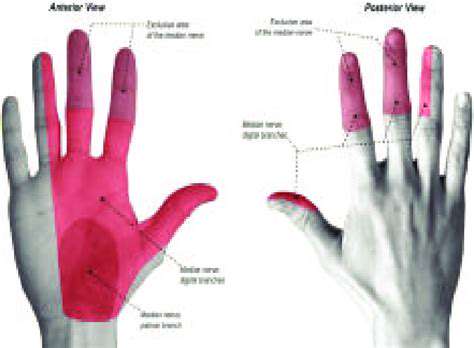Hand Fatigue: Causes and Prevention

The Impact of Repetitive Strain Injuries (RSI)
Understanding Repetitive Strain Injuries (RSI)
Repetitive Strain Injuries (RSI) are a common workplace hazard, affecting individuals who perform repetitive tasks that strain specific muscles, tendons, and nerves. These injuries often develop gradually, making them difficult to pinpoint and diagnose initially. Symptoms can range from mild discomfort to severe pain, impacting an individual's ability to perform daily tasks and potentially leading to long-term disability. Understanding the underlying causes of RSI is crucial for implementing preventative measures and promoting workplace safety.
RSI encompasses a wide spectrum of conditions, including carpal tunnel syndrome, tendonitis, and epicondylitis. These conditions are often characterized by pain, tingling, numbness, and weakness in the affected areas. Proper ergonomic assessments and adjustments in the workplace can significantly reduce the risk of developing these debilitating injuries. Early intervention and treatment strategies are essential in mitigating the long-term effects of RSI.
Contributing Factors to RSI Development
Several factors contribute to the development of Repetitive Strain Injuries. Prolonged exposure to forceful exertions, repetitive motions, awkward postures, and inadequate rest periods all increase the risk. The frequency and duration of these factors play a significant role in the severity of the injury. Incorporating regular breaks and adjusting workstation setups can help mitigate the risk. Working conditions, like inadequate lighting, poor temperature control, and improper tool use, can also significantly contribute to the risk of RSI.
Another crucial factor is the individual's physical condition and predisposition. Pre-existing conditions, such as arthritis or other musculoskeletal issues, can increase susceptibility to RSI. Limited flexibility and strength in the affected areas can also make individuals more vulnerable. Understanding these factors is crucial for implementing effective prevention strategies and creating a safe and healthy work environment.
Preventing Repetitive Strain Injuries
Proactive measures are essential in preventing Repetitive Strain Injuries. Implementing ergonomic principles in the workplace is paramount. This includes ensuring proper workstation setup, providing appropriate tools and equipment, and encouraging employees to adopt proper body mechanics during work activities. Regular breaks and stretching exercises can help maintain flexibility and reduce muscle fatigue. Encouraging employees to report any discomfort or pain promptly is also critical for early intervention and treatment.
Training programs that educate employees about proper body mechanics and the risks associated with repetitive tasks are invaluable. Promoting a culture of awareness and proactive safety measures can significantly reduce the incidence of RSI. Regular health assessments and ergonomic evaluations can identify potential risk factors and allow for timely interventions. Encouraging communication between employees and supervisors regarding any concerns or discomfort is also a crucial aspect of preventing these injuries.
Lifestyle Adjustments for Hand Health and Well-being

Ergonomic Considerations
Proper posture and positioning are crucial for minimizing strain on your hands and wrists during activities like typing, using a mouse, or holding a phone. Consider investing in ergonomic tools, such as a wrist rest, a split keyboard, or a specialized mouse designed for reduced strain. These tools can significantly improve comfort and prevent repetitive strain injuries over time.
Adjusting your workspace layout to maintain a neutral wrist position and avoid awkward angles is essential. Ensure that your keyboard, mouse, and monitor are positioned at a comfortable height and distance to prevent unnecessary strain on your hands and forearms.
Activity Modification
Identifying and modifying activities that exacerbate hand pain is a key aspect of managing hand issues. This could involve adjusting your grip, using assistive devices, or taking frequent breaks to rest your hands. For instance, if you experience discomfort while using a drill, exploring alternative methods or tools might be a more effective solution.
Consider adjusting your daily tasks to reduce the amount of time you spend performing activities that require prolonged or forceful hand movements. Break down larger tasks into smaller, more manageable segments.
Stress Management
Stress and anxiety can often contribute to or worsen hand pain, as stress hormones can affect blood flow and muscle tension. Implementing stress-reducing techniques, such as meditation, deep breathing exercises, or yoga, can be incredibly beneficial in managing hand pain. These practices promote relaxation and can help alleviate tension in the muscles surrounding the hands.
Dietary Considerations
Nutrition plays a significant role in overall health, including hand health. A balanced diet rich in vitamins, minerals, and antioxidants can contribute to maintaining healthy connective tissues and supporting nerve function. Prioritizing foods rich in vitamin B6, vitamin C, and magnesium can prove beneficial for optimal hand health.
Rest and Recovery
Adequate rest and recovery are vital for your hands to heal and repair themselves. Regular breaks throughout the day, especially during activities that strain your hands, are essential for preventing fatigue and injury. Ensure your hands receive sufficient time to rest and recover to prevent further complications.
Implementing a consistent sleep schedule and prioritizing quality sleep will support your body's natural healing processes, including those affecting your hands.
Seeking Professional Guidance
Consulting with a healthcare professional is crucial for diagnosing and managing hand pain effectively. A doctor or physical therapist can evaluate your specific condition, recommend appropriate treatment options, and provide tailored guidance for lifestyle modifications. This professional evaluation can help prevent further complications and ensure you receive the most effective care.
Workstation Setup
Optimizing your workstation setup is critical for preventing hand pain. Ensure your desk, chair, and other equipment are appropriately adjusted to align with ergonomic principles. Maintaining a comfortable and supportive posture throughout the day is key to minimizing strain on your hands and wrists. A well-designed workspace can significantly reduce the risk of developing repetitive strain injuries.
Read more about Hand Fatigue: Causes and Prevention
Hot Recommendations
- The Impact of the Digital Age on Hand Function
- The Role of Hands in Agricultural Innovation
- The Impact of Technology on Hand Artistry
- The Importance of Hand Care for Artists
- How Hand Control Enhances Robotic Surgery
- The Impact of Hand Strength on Physical Labor
- How Handwriting Influences Cognitive Development
- The Impact of Environmental Factors on Hand Health
- The Power of Hands in Building Community
- The Importance of Ergonomics in Hand Health











